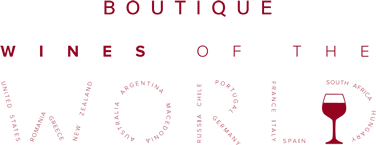Infobox
Other sweet sherries such as Bristol Cream may also be drunk as dessert wine. The production of vins doux naturels was perfected by Arnaud de Villeneuve at the University of Montpellier in the 13th century and they are now quite common in the Languedoc-Roussillon of southwest France. As the names suggest, Muscat de Beaumes-de-Venise, Muscat de Rivesaltes, Muscat de Frontignan, Muscat de Lunel, Muscat de Mireval and Muscat de St-Jean Minervois are all made from the white Muscat grape, whilst Banyuls and Maury are made from red Grenache. Regardless of the grape, fermentation is stopped with up to 10% of 95% grape spirit. The Muscats are made in a somewhat oxidised style, the Grenaches less so.
These wines include Vin Santo (into which almond biscuits (‘cantucci’) are traditionally dunked), Sciachetrà, Recioto di Soave (drunk with the local version of panettone) and the sweet red Recioto della Valpolicella (which stands up to chocolate better than most wine). Across the Alps, the French make ‘straw wine’ (vin de paille) in the Jura, Rhone and Alsace, the Spanish start off making a raisin wine with Pedro Ximénez before fortifying it, the Cypriots have their ancient Commandaria and there have been recent experiments with the style in South Africa and the USA.
Success
Lorem ipsum dolor sit amet, consectetur adipisicing elit. Modi, sint tempora est architecto unde accusantium dicta dolorum obcaecati commodi accusamus.Regular
Lorem ipsum dolor sit amet, consectetur adipisicing elit. Modi, sint tempora est architecto unde accusantium dicta dolorum obcaecati commodi accusamus.Error
Lorem ipsum dolor sit amet, consectetur adipisicing elit. Modi, sint tempora est architecto unde accusantium dicta dolorum obcaecati commodi accusamus.Most wine laws require temperatures below at most −7 °C (19 °F) before the grapes for ice wine can be picked. At such temperatures, some of the water in the grapes freezes out, but the sugars and other solids remain dissolved in the remaining juice. If the grapes are pressed whilst frozen, a very concentrated must can result, which needs special yeast and a long time to ferment. The resulting wines are very sweet, but with lots of balancing acidity. The minuscule yields mean they tend to be very expensive. The most famous ice wines are German Eiswein and Canadian Icewine, but apart from these, ice wine is also made in the United States, Austria, Croatia, Czech Republic, Slovakia, Slovenia, Hungary, Italy, Australia, France and New Zealand in smaller quantities.
Button
